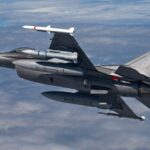
When the Air Force upgraded the engines for its KC-135 aerial refueling tanker, it was able to achieve energy savings in a way it didn’t originally envision. Robert Guerrero, the Air Force’s new deputy assistant secretary for energy, said Wednesday the increased efficiency of the CFM-56 turbofan engines allowed the KC-135 to increase its landing weight. Guerrero said the landing weight restriction for KC-135s was not based off the landing gear or brakes, but off the “controllability” of the aircraft…













